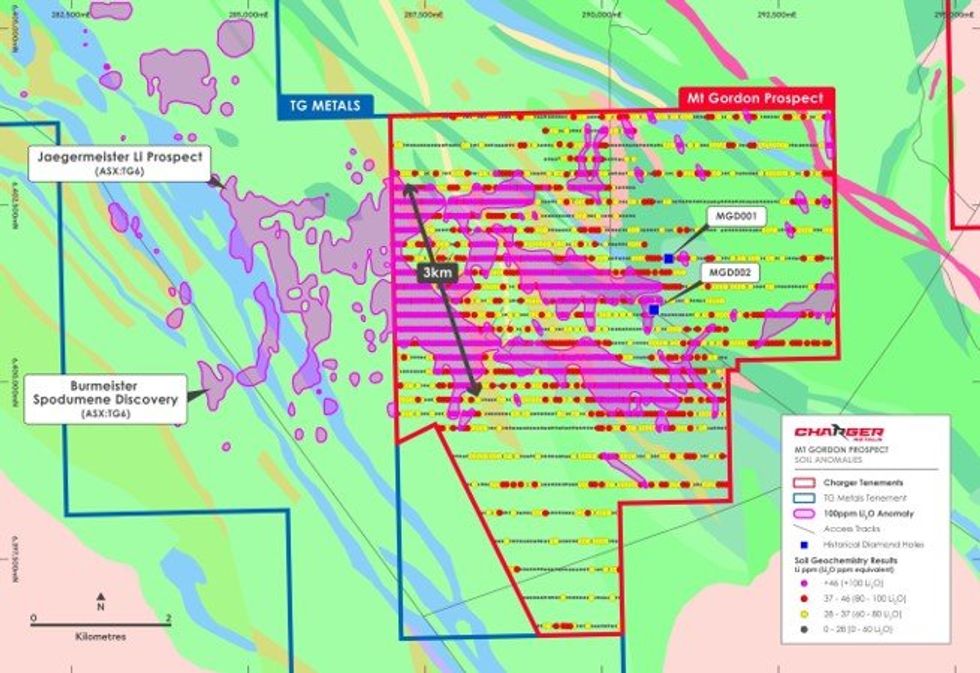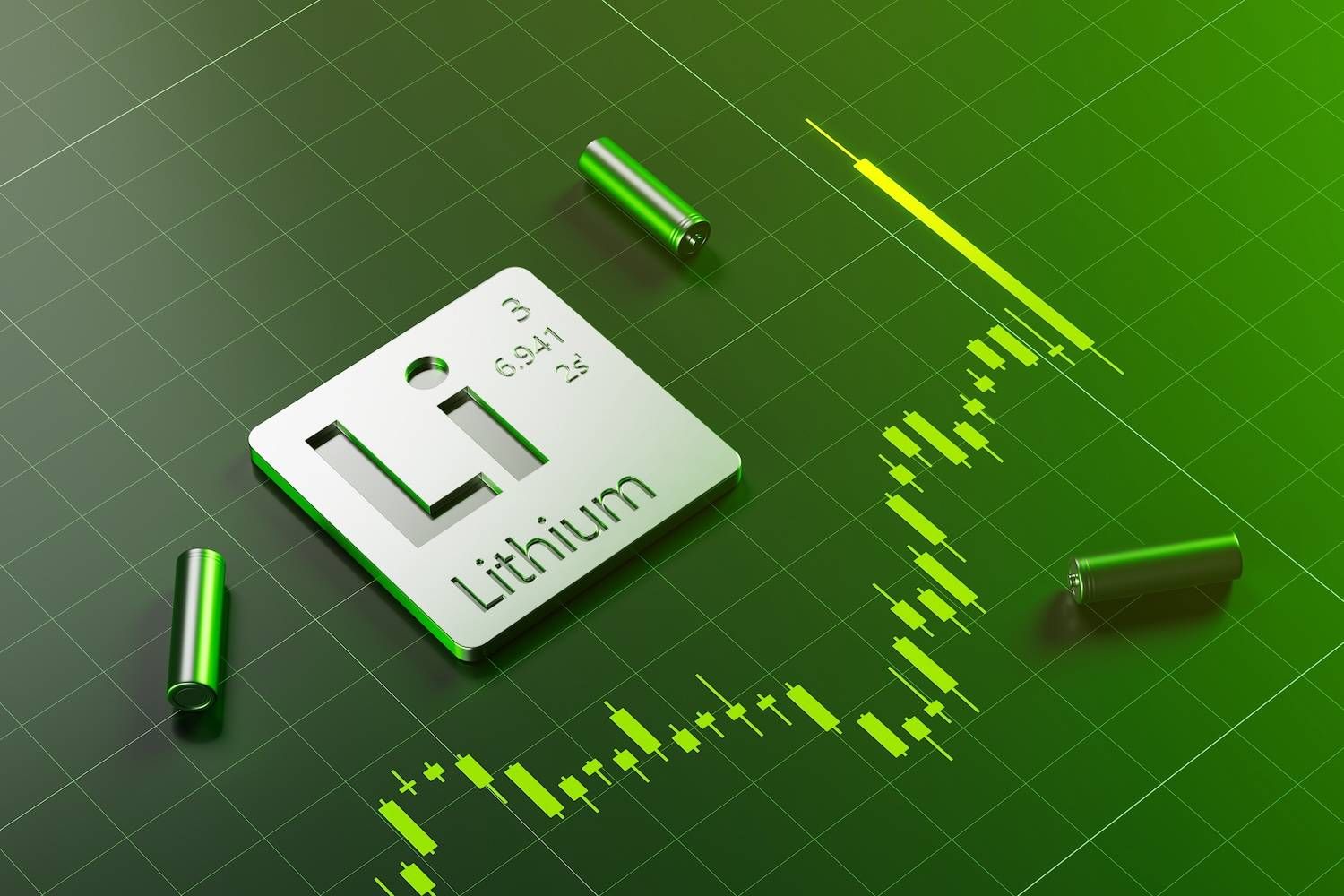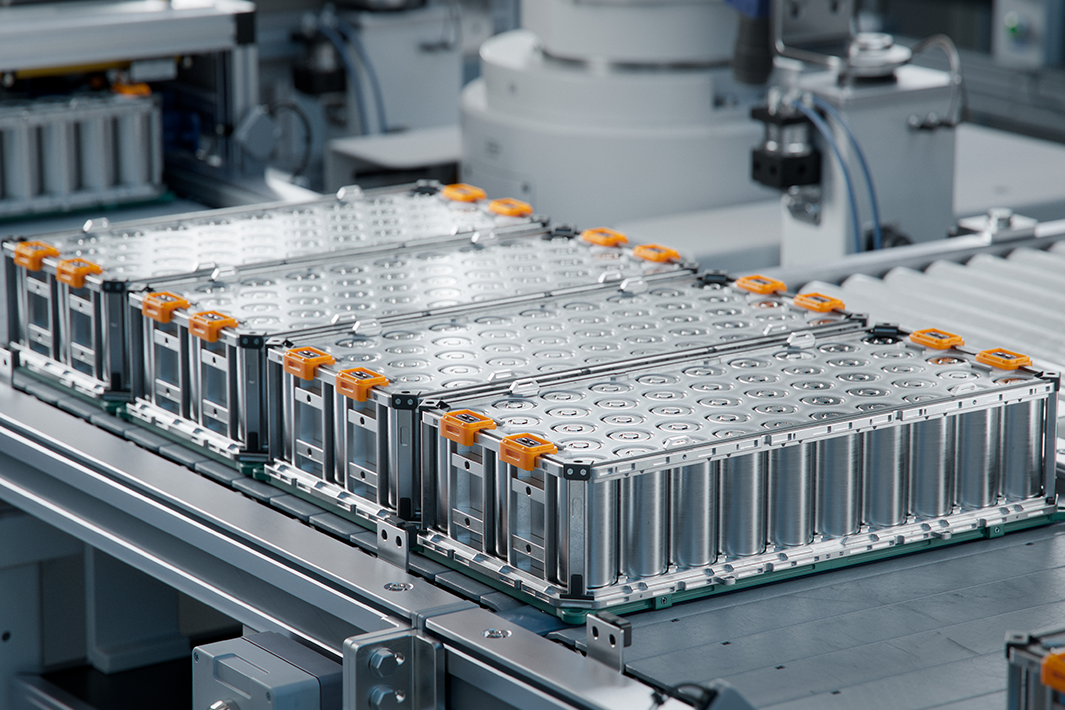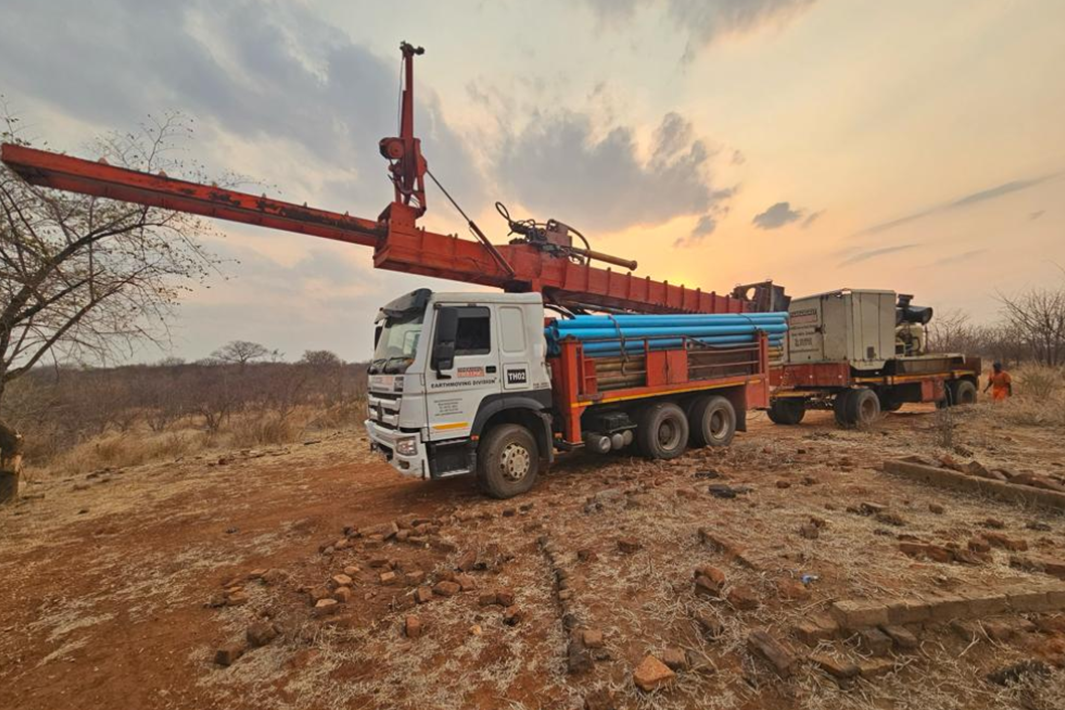
May 21, 2024
Charger Metals NL (ASX: CHR, “Charger” or the “Company”) is pleased to announce that results have been received for the infill soil sampling programme completed across the Mt Gordon Prospect at its Lake Johnston Lithium Project (“Lake Johnston”), in Western Australia. This work is being funded by Rio Tinto Exploration Pty Limited (“RTX”) pursuant to RTX’s farm-in agreement with Charger in relation to the project.2
- Infill soil-sampling programme has further delineated surface lithium anomalies at the Mt Gordon Prospect at Lake Johnston, including anomalies not previously identified.
- New lithium anomalies have been defined near historic drill-holes that logged pegmatite intersections with elevated lithium values.1
- The soils programme has also defined a large niobium anomaly 1.8 km by 1.7 km in the south of the tenement.
- Field mapping and potential air core (AC) drilling is required to determine the source of the elevated niobium at surface.
- Approvals for reverse circulation (RC) drill programmes at Mt Gordon and Medcalf are expected to be received later this quarter.
An infill soil sampling programme was completed last month across the Mt Gordon Prospect, which comprises large soil anomalies (>100ppm Li2O) extending for over 3km,3 and which lies adjacent to the Jaegermeister Lithium Prospect delineated by TG Metals Ltd (ASX:TG6).4
864 samples were taken at 50m spacing on infill lines which reduced sample line spacing to 200m (see Figure 1).
The results from the closer-spaced samples have better defined the large lithium soil anomalies at Mt Gordon, as shown in Figure 1. Furthermore, new more discreet lithium anomalies have been defined. In particular, a new lithium surface anomaly has been delineated in close proximity to a historic diamond drill-hole MGD002, in which thin pegmatite intervals with elevated lithium values were logged at depth.1
Charger’s Managing Director, Aidan Platel, commented:
“The results from the recent phase of soil sampling at Mt Gordon have successfully increased the resolution of the large lithium surface anomalies defined by the first phase of sampling, thus providing more accurate targets for the upcoming RC drill programme.
The new, more subtle lithium anomalies defined by the recent soils exhibit good prospectivity, particularly the anomaly in proximity to known lithium-bearing pegmatites intersected in historical drilling.
We continue to work with the Department of Mines Department of Energy, Mines, Industry Regulation and Safety (DMIRS) with regards to our drilling approvals, with the next phase of RC drilling scheduled for next month.”

In addition to the lithium anomalies, the results from the recent phase of soil sampling at Mt Gordon have defined a large niobium (Nb) anomaly in the south of the tenement (Figure 2). The anomaly (>10ppm Nb) covers an area of approximately 1.8km by 1.7km with results up to 21.4ppm Nb and is coincident with an underlying magnetic high (Figure 2). Further work such as field mapping and sampling, and potentially shallow AC drilling, is required to determine the potential source of this large anomaly (this is yet to be considered by RTX under the current funding arrangements).
Click here for the full ASX Release
This article includes content from Charger Metals, licensed for the purpose of publishing on Investing News Australia. This article does not constitute financial product advice. It is your responsibility to perform proper due diligence before acting upon any information provided here. Please refer to our full disclaimer here.
CHR:AU
The Conversation (0)
24 December
Altius Minerals to Expand Portfolio with C$520 Million Lithium Royalty Deal
Altius Minerals (TSX:ALS,OTCQX:ATUSF) is making a bet on a lithium market recovery, agreeing to acquire Lithium Royalty (TSX:LIRC) in a C$520 million deal that will expand its exposure to battery metals.Under a definitive agreement announced by the two companies on Monday (December 22), Altius... Keep Reading...
23 December
Liontown's First Tjiwarl Member Completes Apprenticeship at Kathleen Valley
Liontown (ASX:LTR,OTC Pink:LINRF) has reached a milestone at its Kathleen Valley operations, with Vaughan Harris becoming the first Tjiwarl community member to complete an apprenticeship with the company.“Being the first Tjiwarl apprentice to complete an apprenticeship here at Liontown feels... Keep Reading...
22 December
Lithium Market 2025 Year-End Review
The global lithium market endured a bruising 2025, with persistent oversupply and softer-than-expected electric vehicle (EV) demand driving prices for the battery metal to multi-year lows.Lithium carbonate prices in North Asia slipped below US$9,550 per metric ton in February — their weakest... Keep Reading...
11 December
Mining the Gap: 5 Forces Shaping North America’s Lithium Supply Chain
A convergence of industry investments, government initiatives and a shifting global trade dynamic is creating an environment ripe for the development of a North American battery supply chain, with lithium playing a leading role. These trends are reshaping the region’s industrial base and opening... Keep Reading...
10 December
Rock Bottom: Strategic Window for Ground-level Lithium Investment
When lithium prices hit bottom, savvy investors know that’s exactly where the next big discovery begins — literally. Beneath the surface of global markets and remote exploration grounds, new opportunities are forming in the wake of a sharp price reset and renewed geopolitical urgency.Recent... Keep Reading...
10 December
Liontown Resources Pens Lithium Offtake Agreement with China's Canmax
Liontown Resources (ASX:LTR,OTC Pink:LINRF) has executed a binding offtake agreement with Chinese conglomerate Canmax Technologies (SZSE:300390) as part of its strategy to diversify its customer base.“Listed on the Shenzhen Stock Exchange, Canmax is one of the world’s leading manufacturers of... Keep Reading...
Latest News
Interactive Chart
Latest Press Releases
Steadright Grants Stock Options
24 December
Silverco Confirms No Material Change
24 December
Related News
TOP STOCKS
American Battery4.030.24
Aion Therapeutic0.10-0.01
Cybin Corp2.140.00





